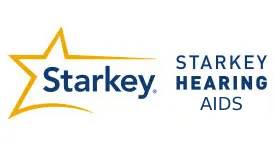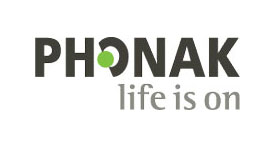Hearing Aids

Find out what it sounds like before you buy!
Call (850) 830-0376 NOW NOW for your FREE, NO CHARGE HEARING TEST AND PRODUCT DEMONSTRATION today!
Same day evaluation & programming to your specific type and severity of hearing loss. YOU leave our office for a “Try B4U Buy®” opportunity.
If you like what you're HEARING (and understanding what people are saying), return to our office and pay for the hearing aids after you have an opportunity to try them out in the various listening environments of which you have been experiencing some challenges. If you don’t think the investment in Better Hearing, just return the hearing aids at NO CHARGE WHATSOEVER. “People don’t care how much we know, until they know how much we care”.
“Better Hearing is Better Living”.
HEARING AIDS
Hearing Aid Evaluations and Fittings
Many consumers are unsure where to find professional help with their hearing. Our highly trained staff provides hearing healthcare in a manner that provides you with the information that you need for a successful hearing aid experience.
Most adults with hearing loss can be helped with hearing aids. Choosing the right hearing aid can be difficult. There is an enormous amount of information regarding hearing aids and the choices can be daunting. Choosing a hearing care professional who can guide you through this process is the first critical decision in purchasing hearing aids.
Of course, the first step to a successful hearing aid experience is an accurate audiological evaluation or hearing test. Equally important is a determination regarding your specific needs and lifestyle. It is critical to convey this information to the Hearing Healthcare Professional. Finally, everyone has a budget. Your budgetary constraints should be discussed. Hearing aids are rarely covered by insurance.
The Truth about Hearing Aids
Realistic Expectations:
Hearing aids work very well when they are fit and adjusted appropriately. All hearing aids should be comfortable with respect to the physical fit and the sound loudness. If there is any discomfort the wearer should return to their Hearing Care Professional immediately for alterations to provide a comfortable fit. Hearing aids provide the wearer with additional information to help that person to hear and understand better. They do not provide “perfect” hearing.
Getting Used to Hearing Aids:
People learn at different rates. Some people need a few days to adjust to their new hearing aids but most need a few weeks. There are some who require several months to make the adjustment. In general, the greater the hearing loss and the longer the hearing loss has been present the more difficult the transition to using hearing aids. There is no perfect way to learn how to adjust to hearing aids. Hearing Care Professionals are uniquely trained to provide rehabilitative programs that should occur after a hearing aid has been fit.
Background Noise:
Virtually everyone, hearing aid users and non hearing aid users complain about background noise at one time or another. There is no way for a hearing aid to eliminate the sounds that the wearer does not want to hear. The good news is that there are now hearing aid circuits and features available that help to minimize some unwanted sounds. There is a great deal of research that reveals dual microphones effectively reduce background noise for many people with certain types of hearing loss. Your Hearing Care Professional can help you determine the best circuits and microphone options for your hearing loss and communication needs. The best and most efficient way to reduce background noise is through the use of assistive listening devices such as FM technology. Ask a hearing care professional how this technology can work with your hearing aid to improve your ability to hear and understand in difficult listening situations.
One vs. Two Hearing Aids:
You have two ears because you need two ears. If you have a hearing loss in each ear that could benefit from hearing aids you should wear two hearing aids. Wearing hearing aids bilaterally (in each ear) will improve your ability to hear in noisy settings, allow you to localize sounds in your environment, improve the ability to understand speech and give sound a fuller quality.
Fact:
Over 60% of individuals who wear hearing aids are fit binaurally. The benefits of wearing two hearing aids are enhanced ability to
(a) hear better in the presence of background noise,
(b) determine where sound is coming from, and
(c) hear soft sounds at lower levels.
The Hearing Aid Process:
Evaluation:
At the time of the hearing evaluation a case history will be taken to determine the type of hearing problem that the individual perceives and how his/her family perceives the hearing problem. Questions will also be asked about the onset of the hearing loss, presence of tinnitus (ringing in the ears) and dizziness. Based on the results of the hearing test and the answers to these questions Our highly trained staff may make a referral to a medical doctor for an examination and possible treatment. If the testing reveals a sensori-neural hearing loss, a hearing aid may be recommended for one or both ears.
Hearing Aid Evaluation:
There are literally hundreds of hearing aids from which to choose. Our highly trained staff will use the information that was provided in the case history and in the audiological evaluation to help narrow those choices for you. The final decision on which hearing aid is purchased is the choice of the wearer. The main types of hearing aids available today are conventional or Analog and Digital.
A STYLE OF HEARING AID FOR EVERY LIFESTYLE (and type and severity of hearing loss)

Styles of Hearing Aids Include:
Completely-In-The-Canal Style Hearing Aids (CIC):
These are the smallest and most cosmetically discreet. The CIC instruments fit completely in the canal and are custom-made. There is a clear nylon string to help with insertion and removal. They are powered with a #10 hearing aid battery.

In-the-Canal Style Hearing Aids (ITC):
These are larger than the CIC devices. They fit within the ear canal and are custom-made. They are powered with a #312 or #10 hearing aid battery.

In-the-Ear Style Hearing Aids (ITE):
These are larger than the ITC style. They fit in the ear, filling the entire “bowl” of the ear. They are custom made. The customization along with the lightweight and compact size makes these instruments comfortable and easy to manage. They are powered by a #13 or #312 battery.

Conventional Behind-The-Ear Style Hearing Aids (BTE):
The processing components are housed in a case that fits behind the ear. Sounds enter the instrument, are amplified, and travel through a tube that is contoured over the top of the listener’s ear and into an ear mold inside the ear. BTEs are durable, easy to handle and maintain, and can be easily adapted for use with the wide variety of assistive listening devices. They are powered with a #675 or #13 battery.

Open Fit And Receiver In The Canal Behind the Ear Style:
These are similar to the conventional BTE but are much smaller, making them more discreet. A very small tube leads to the ear canal making this option much more cosmetically appealing while offering superior sound quality.
Typical Costs of Hearing Aids:
Premier Digital & Programmable Technology Hearing Aids with AI (Artificial Intelligence): $3,868 each
(This is the best choice for Patients with a Profound Hearing Loss)
Advanced Digital & Programmable Technology Hearing Aids: $3,118 each
(This is the best choice for Patients with a Moderate to Severe Hearing Loss)
Select Digital & Programmable Technology Hearing Aids: $2,368 each
(This is the best choice for Patients with a Moderate Hearing Loss – ‘without Cochlear Dead Regions’)
Basic Digital and/or Analog Technology Hearing Aids: $1,618 each
(This is the best choice for Patients who are in a Profession that requires hearing EVERYTHING and cannot afford to not hear all that is being communicated.)
SOME EXAMPLES OF PROFESSIONS ARE:
TEACHERS, JUDGES, ENGINEERS, ATTORNEYS, TRUCK DRIVERS, BUSINESS OWNERS
There are three basic styles of hearing aids. The styles differ by size, their placement on or inside the ear, and the degree to which they amplify sound.
- Behind-the-ear (BTE) Hearing aids consist of a hard plastic case worn behind the ear and connected to a plastic earmold that fits inside the outer ear. The electronic parts are held in the case behind the ear. Sound travels from the hearing aid through the earmold and into the ear. BTE aids are used by people of all ages for mild to profound hearing loss.A new kind of BTE aid is an open-fit hearing aid. Small, open-fit aids fit behind the ear completely, with only a narrow tube inserted into the ear canal, enabling the canal to remain open. For this reason, open-fit hearing aids may be a good choice for people who experience a buildup of earwax, since this type of aid is less likely to be damaged by such substances. In addition, some people may prefer the open-fit hearing aid because their perception of their voice does not sound “plugged up.”
- In-the-ear (ITE) Hearing aids fit completely inside the outer ear and are used for mild to severe hearing loss. The case holding the electronic components is made of hard plastic. Some ITE aids may have certain added features installed, such as a telecoil. A telecoil is a small magnetic coil that allows users to receive sound through the circuitry of the hearing aid, rather than through its microphone. This makes it easier to hear conversations over the telephone. A telecoil also helps people hear in public facilities that have installed special sound systems, called induction loop systems. Induction loop systems can be found in many churches, schools, airports, and auditoriums. ITE aids usually are not worn by young children because the casings need to be replaced often as the ear grows.
- Canal Aids fit into the ear canal and are available in two styles. The in-the-canal (ITC) hearing aid is made to fit the size and shape of a person’s ear canal. A completely-in-canal (CIC) hearing aid is nearly hidden in the ear canal. Both types are used for mild to moderately severe hearing loss.Because they are small, canal aids may be difficult for a person to adjust and remove. In addition, canal aids have less space available for batteries and additional devices, such as a telecoil. They usually are not recommended for young children or for people with severe to profound hearing loss because their reduced size limits their power and volume.










